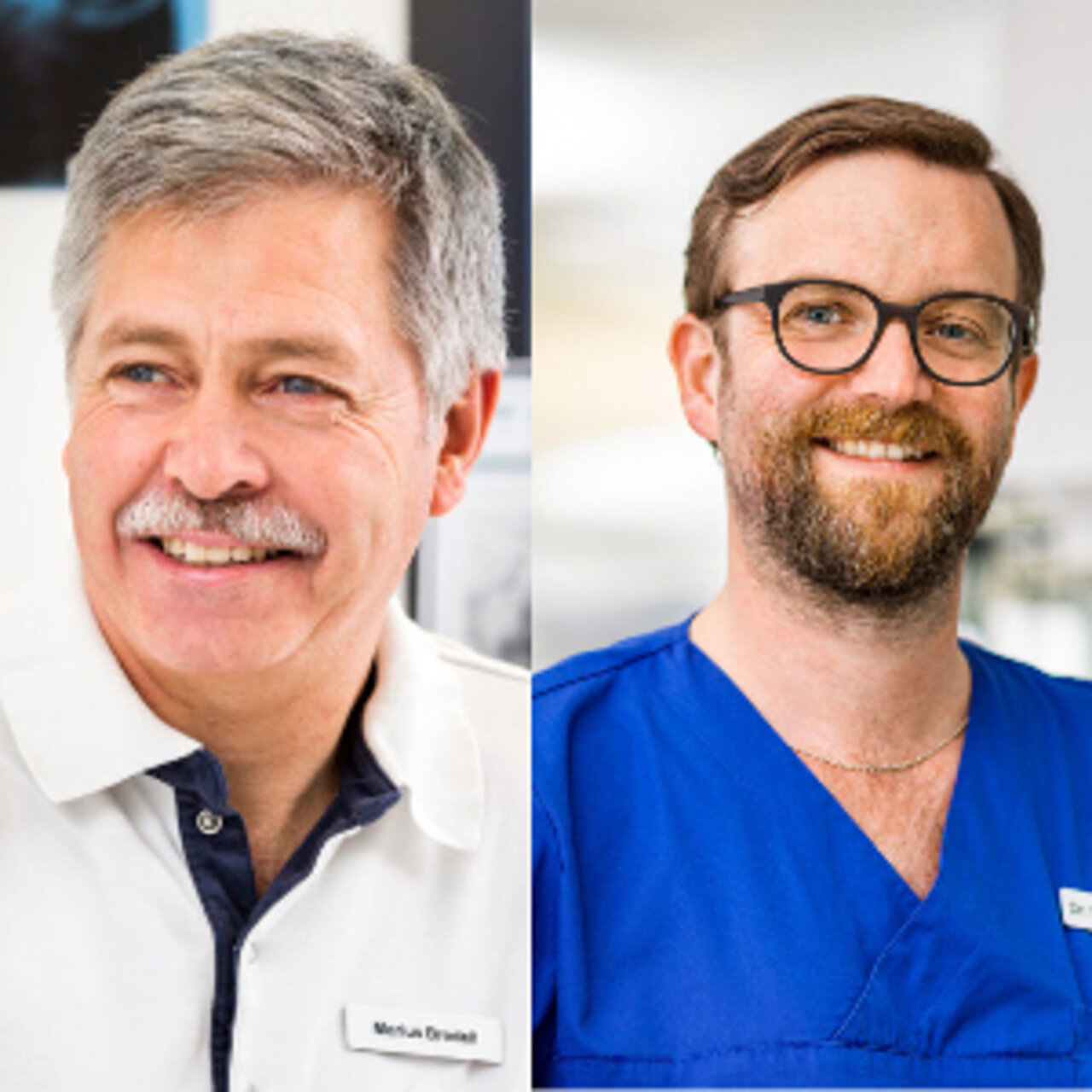Specialists in Snoring
2 Specialists found
Information About the Field of Snoring
How Does Snoring Occur?
Snoring occurs during sleep due to the vibration of soft tissue structures at constrictions of the upper airway. During sleep, there is a decrease in muscle tension so that the vibration of the tissues increases, and the airways also narrow more. This increases the speed of the respiratory flow, and the snoring sound can develop.
How Common is Snoring?
Depending on who is asked (affected person or partner) and how often the person apparently snores, figures of 2-86% of affected persons in the population can be found in the literature. For example, many affected people snore only when they have drunk a little more alcohol. However, it has been proven that men are generally more frequently affected by snoring and that the maximum occurrence is in the middle age group (45-55 years). At the age of 45-55, about 62% of men and 45% of women snore.
What Are the Causes of Snoring?
Often, typical anatomical conditions such as excess mucosa in the soft palate or proliferation of soft tissue in the pharynx are found in those affected. The origin of the snoring sound is often the soft palate with the attached uvula. However, the sounds can originate in the entire pharynx or, less frequently, in the larynx. Risk factors for developing these sleep sounds are mainly male gender, increased body weight, increasing age (up to about 65), alcohol consumption, and smoking.
Is Snoring Dangerous?
Snoring can be an independent phenomenon or a leading symptom of obstructive sleep apnea (OSA = breathing disorder during sleep). Regular snorers have a fivefold increased incidence of OSA. Sleep apnea causes patients to stop breathing during sleep. As a result, the patients usually suffer from pronounced daytime sleepiness and reduced performance. It is not always possible to distinguish between snoring alone and obstructive sleep apnea since the transitions are fluent, and snoring is also involved in developing sleep apnea. Currently, it is still unclear whether an early therapy of snoring can prevent OSA development. Associations between the development of high blood pressure (hypertension), diabetes mellitus, elevated blood lipid levels (hypercholesterolemia), and snoring are suspected.
In the case of the independent phenomenon of "snoring," the patients suffer primarily because of socially disturbing sleep noises. Thus, the severity of the disorder depends mainly on the perception of the bed partner. Partners of snorers complain more often about sleep disturbances, morning headaches, or daytime fatigue. 55% feel disturbed by snoring almost every night, 40% sleep in a different room at least 1x per week, 26% use sleeping pills or earplugs, and 35% report intermittent relationship problems because of snoring.
How Can Snoring Be Diagnosed?
When diagnosing snoring, a detailed questioning (anamnesis) of the patient and ideally also of the bed partner is guiding. The snoring is evaluated in more detail about the triggers (e.g., alcohol consumption, supine position) and frequency of the sleeping noises. In addition, questionnaires can be helpful. The physical examination of the patient should detect changes in the upper airways. The complete pharynx, the nose, the facial skull, and the oral cavity are examined, possibly also endoscopically, for anatomical changes (e.g., excess mucosa). It is essential to exclude obstructive sleep-related breathing disorders when diagnosing the disease, so an additional sleep medical examination in the sleep laboratory may be necessary.
Snoring - What to Do?
According to the current state of knowledge, snoring is not a dangerous disease, so there is no medical necessity for therapy. But if there is a wish for treatment on the part of the affected person, especially in case of strong social stress, the treatment options should be discussed with him.
There are many, partly very questionable, therapy approaches. There is no scientific proof about the effectiveness of snoring sprays, snoring pillows, or similar. When choosing a method, the therapy's benefits and long-term risks must be weighed. For example, decongestant nasal sprays cause a short-term improvement of the snoring phenomenon, but chronic use can cause severe mucosal damage. Basically, all methods can be used in isolation or combination.
Reducing body weight is recommended for all overweight patients. Avoiding sleeping pills and evening alcohol consumption, nicotine abstinence, and a stable sleep-wake rhythm can also improve snoring and are, of course, generally recommended from a health point of view. In suitable cases, an improvement can be expected with a "mandibular protrusion splint." This bite splint moves the lower jaw forward and widens the pharyngeal space during sleep. When used, however, regular check-ups are necessary to detect any changes in the dental apparatus at an early stage. If snoring occurs only in the supine position, which is quite rare, preventing the supine position using aids can reduce the sleep noise. However, this method is often poorly accepted by patients.
Snoring Surgery - What Surgical Methods Are Available and What Are Their Benefits?
Surgical, mostly minimally invasive, interventions are a therapeutic option if the anatomical conditions are suitable. Only a few long-term results are known regarding surgical interventions to improve snoring. Therefore, they must be discussed with the patient. The higher the body mass index (BMI), the lesser the effectiveness of the interventions, so surgical methods should be used with restraint, especially in overweight patients.
In the 1990s, surgeries on the soft palate were still very radical; today, surgery is much more restrained. At the soft palate, there is, e.g., the possibility of a soft palate lift and uvula reshaping ("Uvulopalatopharyngoplasty" = UPPP) or a tonsillectomy. Today, laser surgery (LAUP), electrosurgical procedures (radiofrequency surgery), and soft palate implants are used to reduce excess soft tissue. The choice of method depends mainly on the anatomical, very individual findings.
Finally, it should be said that currently, there is very little data available on the success of the therapy. Therefore, the success is also difficult to measure, which should be clarified to the affected person before an intervention.
Snoring - Which Doctor Can Help?
From a medical point of view, snoring is a harmless phenomenon that does not require therapy. Still, due to the social consequences and possible restriction of the quality of life, medical help should be sought, if necessary, to clarify sleep apnea.
Basically, one can first discuss the problem with the general practitioner, who can refer the patient to an ENT specialist, sleep physician, and lung specialist. Usually, it is first clarified whether sleep apnea syndrome or other pathological causes are responsible for snoring. Then, the snoring specialist will discuss the appropriate treatment with the patient.
Sources
S2k-Leitlinie „Diagnostik und Therapie des Schnarchens des Erwachsenen“, Arbeitsgemeinschaft Schlafmedizin der Deutschen Gesellschaft für Hals-Nasen-Ohren-Heilkunde, Kopf- und Hals-Chirurgie e.V.
Patientenratgeber „Schnarchen des Erwachsenen“ der deutschen Gesellschaft für Schlafforschung und Schlafmedizin (DGSM), AG Chirurgische Therapieverfahren in der Schlafmedizin

